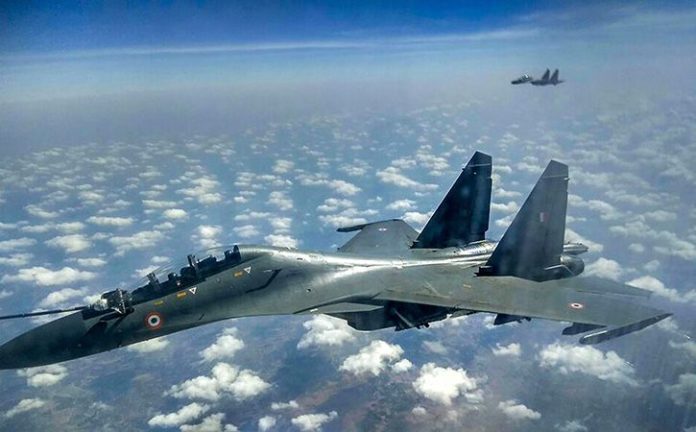Indian Air Force started its Pan-India Gagan Shakti exercise a few days ago under which its fighter planes have carried out 5000 sorties in just 72 hours. These sorties have been conducted along the Western border shared by India and Pakistan. Being carried out in two phases, the force has now shifted its focus to the Northern border with China. The main aim behind this exercise is that India wants to prepare for a 2-front combat at the same time.
As per the media reports, this is not the first time that IAF has carried out an exercise at such a huge level. It has already carried out such exercises during the Operations Brasstacks in 1986-1987 followed by Operation Parakram in 2001-2002.
Reportedly, in the drill, the Indian Air Force exercised its defensive as well as offensive strategies while keeping in mind that it’s facing a deficit of planes currently. While the force requires 42 Fighter Squadrons, it’s managing with just 31 of them at the moment.
Talking about Gagan Shakti, a total of 1150 fighters, helicopters, drones, and aircraft were included in the exercise. Besides, there were air defense missiles, surveillance, radars, and other units deployed to monitor the operation- readiness of IAF. Apart from this, both Army and Navy were also seen conducting integration land-air-sea combat operations.
Talking to a media house, Air Chief Marshal Birender Singh Dhanoa clarified that this exercise wasn’t against any country rather it was to validate India’s operational capabilities and concepts in a realistic war-like situation. The IAF also conducted maritime air operations in which its frontline fighter jets Su-30 MKIs engaged multiple targets in the western seaboard covering over 2500 km.
Furthermore, there were many long-range missions that were facilitated because of the IL-78 Flight refueling aircraft that conducted the exercise accompanied by P-8I aircraft equipped with Indian Navy’s Airborne Warning and Control System (AWACS) platform. It also included mid-air refueling capability to carry out air dominance and deep strike validation in the Indian Ocean Region (IOR).












